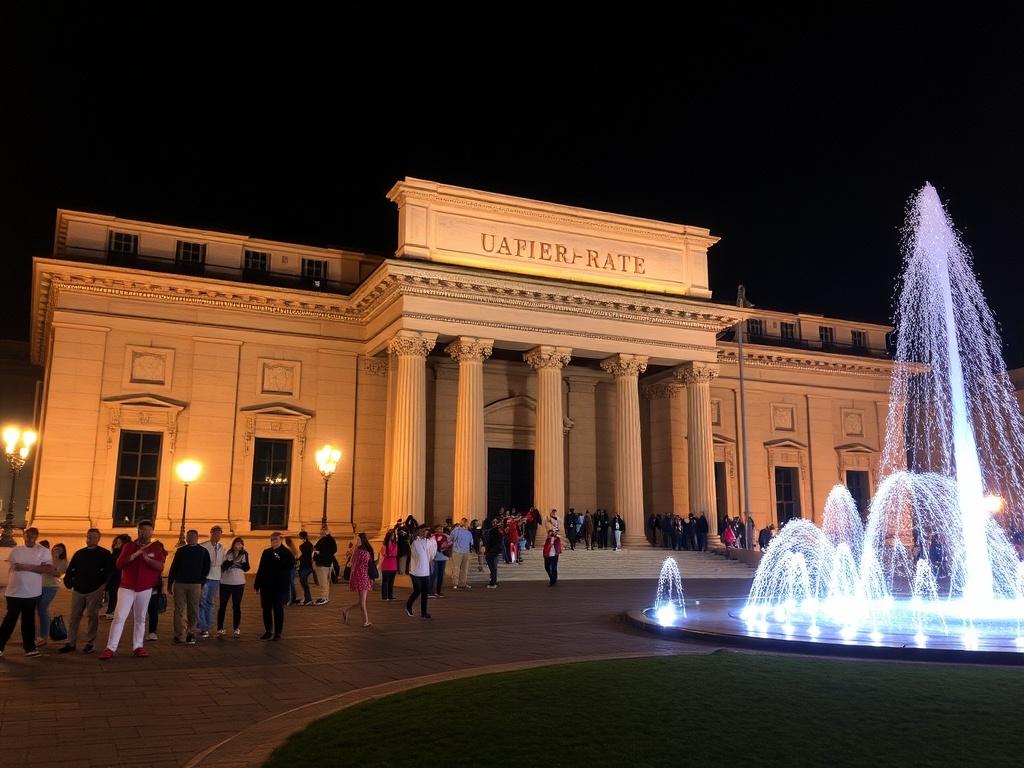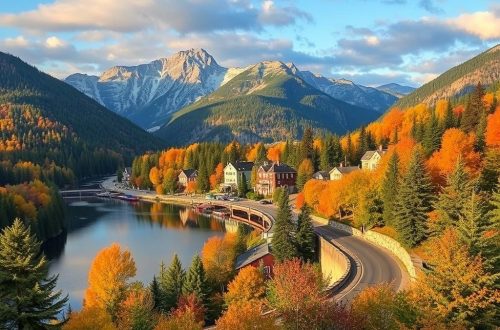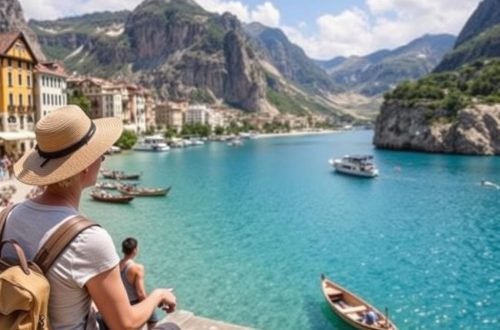
Most Overrated Tourist Attractions: What to Know Before You Go
Traveling the world is an exciting and enriching experience. From iconic landmarks to breathtaking natural wonders, tourists always look forward to visiting famous sites. However, not every popular attraction lives up to the hype. Some destinations, despite their fame, can leave visitors underwhelmed or even frustrated. Today, we’ll explore some of the most overrated tourist attractions around the globe, helping you make informed choices about where to spend your precious travel time and money. Whether you’re a seasoned traveler or planning your first big trip, this guide will shed light on widely promoted places that may not be worth the fuss and suggest alternatives that often deliver a richer experience.
Why Are Some Tourist Attractions Overrated?
Tourist attractions become famous for several reasons: historical significance, media exposure, or simply tradition. However, popularity does not always guarantee a satisfying visit. Many overrated tourist attractions suffer from overcrowding, inflated ticket prices, long waiting times, and unremarkable experiences that do not justify the effort. Some places are heavily commercialized, with souvenir shops and tourist traps detracting from their original charm. In other cases, marketing campaigns and social media hype create unrealistic expectations that reality cannot meet.
Understanding why an attraction is overrated can help travelers avoid disappointment. It also encourages exploring lesser-known destinations that are often just as rewarding, if not more so.
Top Most Overrated Tourist Attractions Around the World
Here’s a carefully curated list of some of the most overrated tourist attractions based on traveler reviews, expert opinions, and common experiences. We’ve included tips on what to expect and suggested alternatives that make for equally memorable visits.
1. The Leaning Tower of Pisa, Italy
Everyone dreams of snapping the perfect photo “holding up” the Leaning Tower of Pisa. While this medieval structure is undeniably unique, many tourists find the actual visit underwhelming. The area surrounding the tower can be overcrowded, making it hard to enjoy the site peacefully. Additionally, the entrance fee to climb the tower might feel overpriced for the limited space and activity. The small town of Pisa itself, beyond the tower, lacks the charm of other Italian destinations.
If you’re interested in stunning architecture and less crowded experiences, consider visiting the nearby city of Lucca, which offers beautiful Renaissance walls and a richer cultural life.
2. Times Square, New York City, USA
Times Square is perhaps one of the most iconic places in New York City, known for its bright advertisements, bustling crowds, and energy. However, many visitors describe it as a neon-lit tourist trap rather than an authentic part of the city. The crowds can be overwhelming, street performers sometimes pushy, and prices at nearby eateries can be inflated. The area rarely represents typical New York life and might be better experienced through a quick visit or from a distance.
For an alternative experience, explore neighborhoods like Greenwich Village or Brooklyn, where local culture and creativity thrive away from the chaos.
3. The Hollywood Walk of Fame, Los Angeles, USA
For cinephiles, the Hollywood Walk of Fame may seem like a must-see. In reality, this stretch of sidewalk embedded with stars named after celebrities is often crowded, dirty, and scattered with vendors trying to sell souvenirs. Many visitors find the walk lackluster, especially when compared to the glamorous image Hollywood projects. The promising sightings of celebrities here are also quite rare.
Instead, try the Hollywood Bowl or Griffith Observatory, which offer spectacular views, live shows, and a much more pleasant atmosphere.
4. The Mona Lisa at the Louvre Museum, Paris, France
The Mona Lisa is arguably the most famous painting in the world, drawing millions to the Louvre Museum every year. The reality? The artwork itself is small, behind thick glass, and surrounded by crowds, making it difficult to get a good view or appreciate the details. Moreover, the frenzy can overshadow other incredible pieces within the museum that are often overlooked.
If art is your passion, consider exploring smaller galleries or museums like the Musée d’Orsay or the Orangerie, which feature masterpieces in less crowded settings.
5. The Great Wall of China (Popular Sections), China
The Great Wall is a symbol of Chinese history and engineering marvel. Yet, the most visited sections near Beijing, such as Badaling and Mutianyu, can be packed with tourists, commercial vendors, and even amusement rides, which diminish the authentic experience. The crowds may also make it hard to enjoy the breathtaking views or sense the scale of this ancient structure.
For a more tranquil visit, the Jinshanling or Simatai sections offer rugged beauty with fewer visitors and more hiking opportunities.
6. The Sydney Opera House Tour, Australia
The Sydney Opera House is one of the world’s most recognizable buildings, and the guided tour is often recommended. However, some find the tour brief and less engaging than expected, with limited backstage access and a fairly standard overview of the building’s history. The price for the tour can also seem steep given the limited content.
If you appreciate architecture and performance, consider booking a show in advance or exploring other neighborhood gems like the Rocks or Barangaroo precincts.
7. The Trevi Fountain, Rome, Italy
The Trevi Fountain is famous for the tradition of throwing coins into the water to grant wishes, but it can be swamped with visitors at any time of day. The space around the fountain is usually congested, and pickpockets are known to operate in the area. Additionally, with ongoing restoration works in past years, the fountain’s experience could be affected.
Nearby fountains and piazzas, less crowded yet equally charming, include the Fontana dell’Acqua Paola or Piazza Navona.
8. The Las Vegas Strip, Nevada, USA
The Las Vegas Strip is a spectacle of lights, casinos, and entertainment, but it’s not for everyone. The noise, crowds, and commercialization can overwhelm some visitors, especially families or those seeking cultural experiences. The focus on gambling and nightlife might limit options for daytime sightseeing outside of resorts.
If you’re looking for a quieter or more outdoorsy Nevada experience, places like Red Rock Canyon or the nearby Hoover Dam provide stunning natural views and history.
Table: Quick Summary of Overrated Attractions and Alternatives
| Overrated Attraction | Common Complaints | Suggested Alternative | Why Alternative is Better |
|---|---|---|---|
| Leaning Tower of Pisa | Overcrowding, expensive climb, limited surroundings | Lucca, Italy | Better architecture, less crowded, authentic Italian town |
| Times Square | Crowds, tourist traps, expensive food | Greenwich Village, Brooklyn | Local culture, quieter, more genuine NYC experience |
| Hollywood Walk of Fame | Dirty, crowded, lackluster attraction | Hollywood Bowl, Griffith Observatory | Beautiful views, live events, pleasant atmosphere |
| Mona Lisa at the Louvre | Small viewing area, crowds, overshadowing other exhibits | Musée d’Orsay, Orangerie Museum | Less crowded, stunning art collections |
| Great Wall (Badaling, Mutianyu) | Crowds, commercialized zones, limited authenticity | Jinshanling, Simatai | Fewer tourists, genuine hiking experience |
| Sydney Opera House Tour | Brief, expensive, limited access | Attend performance, explore local precincts | More immersive and authentic experience |
| Trevi Fountain | Crowded, pickpockets, renovations | Fontana dell’Acqua Paola, Piazza Navona | Quieter, charming, safer |
| Las Vegas Strip | Noisy, crowded, commercialized | Red Rock Canyon, Hoover Dam | Natural beauty, quieter, educational |
How to Avoid Disappointment When Visiting Tourist Attractions
Visiting a famous attraction can be thrilling, but it’s important to go in with realistic expectations. Here are some handy tips to help you avoid the disappointment that often accompanies overrated tourist sites:
- Do Your Research: Read multiple reviews from recent visitors and check travel forums. Look for common complaints or praises to gauge what to expect.
- Plan Timing Smartly: Visit during off-peak times or seasons to avoid crowds. Early mornings or weekdays often offer a more peaceful experience.
- Consider Alternatives: Some lesser-known attractions can offer a deeper dive into local culture or history while avoiding the crowds.
- Set Realistic Expectations: Understand what the attraction truly offers and whether it aligns with your interests. Avoid relying solely on Instagram photos or hype.
- Book Tickets in Advance: For popular sites, pre-booking can reduce waiting times and help you skip lines.
- Seek Local Advice: Locals often know hidden gems that fly under the tourist radar but are rich in experience.
Why Sometimes Overrated Attractions Still Draw Crowds
It’s natural to wonder why a place that disappointed some visitors still remains a tourist magnet. Several factors contribute to this:
- Cultural Significance: Some attractions are iconic for a reason, holding historical or cultural importance that outweighs their shortcomings.
- Media and Advertising: Movies, TV shows, and social media spotlight some destinations intensely, inspiring curiosity and travel bookings.
- Social Proof: People tend to visit what others recommend or have deemed popular, often without independent research.
- Bucket List Appeal: Certain places appear on nearly every travel bucket list. People want the experience regardless of mixed reviews.
This means that while an attraction may be overrated in some respects, its fame and symbolic value continue to draw millions of visitors each year.
How to Make the Most of Your Visit to Overrated Tourist Attractions
If you decide to visit one of these well-known destinations, here are some ideas to enhance your trip and get more from the experience:
1. Use Guided Tours Wisely
Opting for a knowledgeable guide or a small group tour often adds context and stories that bring an attraction to life. They can also help you navigate crowds and find the best vantage points.
2. Combine With Other Activities
Rather than focusing solely on the main attraction, plan a day filled with surrounding experiences like local markets, cafés, or walking tours. This can diversify your trip and add more genuine memories.
3. Capture Quiet Moments
Early early morning visits, just before opening hours, or late evenings can offer moments when the crowds thin and you can appreciate the attraction calmly.
4. Adjust Expectations
Accept that some places are more about the story and symbolism than wow-factor, which helps temper enthusiasm and avoid frustration.
The Role of Social Media in Overrating Tourist Attractions
In recent years, social media platforms like Instagram and TikTok have played a major role in popularizing and sometimes overruling the true value of tourist destinations. Photos showcasing perfect angles and edited scenes make places seem more magical than they might actually be. This has led to phenomena like “Instagram tourism,” where travelers visit spots mainly to replicate viral images.
While social media can inspire travel and discovery, it also contributes significantly to the overrated nature of some attractions. Knowing this, travelers should balance online impressions with ground realities, seeking authentic experiences beyond the screen.
Final Thoughts Before Planning Your Trip
When planning a trip, it’s wise to balance visits to well-known landmarks with lesser-known gems. Seeking out local favorites, hidden neighborhoods, and natural spots off the beaten path can often be more rewarding and less stressful than battling crowds at famous sites. Overrated tourist attractions are often still worth visiting for their significance but understanding their limitations prepares you for a better experience. Travel is about discovery, connection, and joy — whether at the world’s most famous spots or quiet little corners.
Conclusion
While the world is filled with renowned tourist attractions that pack history, beauty, and culture into shareable moments, many of these sites are, in fact, quite overrated. From the Leaning Tower of Pisa’s overcrowding to Times Square’s overwhelming chaos, travelers often find themselves underwhelmed by the reality behind the hype. The rise of social media has further inflated expectations, sometimes eclipsing genuine experiences in favor of photo-ready moments. However, overrated attractions still hold value for their cultural importance and landmark status. By approaching these destinations with realistic expectations, exploring alternative sites, and embracing local insights, travelers can transform potentially disappointing visits into enriching adventures. Ultimately, the best travel memories come from openness, curiosity, and the willingness to explore beyond the tourist trail.




